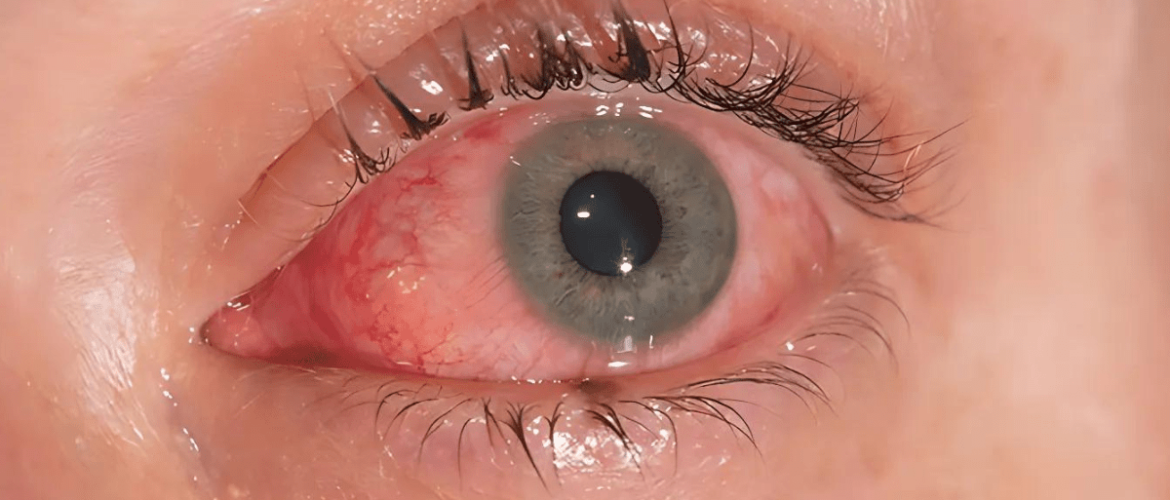Ever wondered why your eyes itch? Itchy eyes, burning or irritated eyes, red eyes are all symptoms of eye allergies. An eye allergy develops when your eye comes in contact with any allergens or substance that irritates the eye.
Understanding Eye allergies
Ocular allergy or eye allergy also known as Allergic conjunctivitis is an inflammatory response of the conjunctiva to an allergen. It is part of a larger systemic atopic reaction and is usually seasonal with associated upper respiratory tract symptoms and complaints of redness and swelling of the conjunctiva with severe itching and increased lacrimation. Presence of rhinitis often terms this process as allergic rhino conjunctivitis.
Types of Allergic Conjunctivitis
Allergic Conjunctivitis can be differentiated into
- Seasonal Conjunctivitis-Recur seasonally with the changes in pollens and allergens present. Minimal or local inflammation that often resolves and remits.
- Perennial Conjunctivitis – has a milder presentation that can last the whole year-round.
- Immune Mediated Conjunctivitis
- Vernal keratoconjunctivitis (VKC)-exacerbations occurs more frequently during the spring and summer months. Most patients “grow out” of the disease with decreased symptoms ranging from 2-30 years of age. However, untreated VKC can lead to eyelid thickening that ultimately leads to ptosis. Severe corneal involvement can cause corneal neovascularization, thinning, ulceration, and infection. This can lead to vision loss or development of keratoconus. Conjunctival scarring can also occur.
- Atopic Keratoconjunctivitis (AKC )- the onset of symptoms occurs during childhood but peaks during young adult and continues into the fifth decade of life. The course remains chronic with periodic acute exacerbations
- Giant Papillary Conjunctivitis (GPC)-This disease process is directly correlated with presence of risk factors. Therefore, continued contact lens wear, exposed corneal or scleral sutures, or ocular prosthesis cause worsening or increasing symptoms. If left untreated, GPC can cause acquired ptosis.
Symptoms of eye allergies
Some symptoms of eye allergies that needs to be watched are
- Itching, rubbing & irritation of the eye, soreness
- Redness, Watery discharge, swollen eyelids
- Mucous discharge, Yellow white concretions
- Limbal spots -Horner trants
- Shield ulcer
- Plaques
- Erosions
- Vascularisation
- Pannus
Chronic rubbing can lead to ectatic disease like keratoconus. Further, steroid responders can have increased intraocular pressure.
Triggers
Ocular allergies have been on the rise in recent times. Both airborne and contact allergens play a major role. Further the increase in environmental pollution across nations also acts as a major contributor to eye allergy.
- Seasonal Allergic Conjunctivitis is typically triggered by airborne pollen, grass, cat dander.
- Perennial Allergic Conjunctivitis is triggered by various allergens like dust, mites, molds & animal dander.
- Vernal Keratoconjunctivitis gets triggered by increased humidity and dry weather due to environmental allergens.
- Atopic Keratoconjunctivitis results from genetic predispositions like asthma, atopic dermatitis.
- Giant Papillary Conjunctivitis is caused by soft contact lens, poor lens hygiene, sutures, prosthesis..
Managing Eye allergies
Eye is an important organ and any form of infection should be treated by an ophthalmologist/allergist. However, taking precautions and initial first aid at home always helps. Allergies can be managed by :
Home Management
- Avoiding triggers or allergens
- Maintaining hygiene by frequent washing of clothes, Bathing/showering before bedtime
- Regular maintenance of air conditioner filters
- Keeping beds, duvets and pillows free of dust mites and pet dander.
- Artificial tears to dilute allergens
- Cool compresses / ice packs
Line of treatment
First line: The inexpensive and over-the-counter antihistamine/ vasoconstrictor agents are the first line of treatment. However, when not adequately controlled with topical medications and oral antihistamines consult a specialist.
Second line: Second-generation topical histamine H1-receptor antagonist. H-1 receptor antagonists are more effective than the vasoconstrictors, but much more expensive.</p
Third line: recurrent/persistent – mast-cell stabilizers can be used. Antihistamine Mast cell stabilizers tend to provide quick relief from itching and redness. Oral antihistamines, such as Xyzal (levocetirizine), Zyrtec (cetirizine), Allegra also helps.</p
However, if symptoms are not adequately controlled, a brief course of low-potency and low-frequency topical corticosteroids can be administered.. Adjunctive therapy is the addition of topical cyclosporine 2%. If the VKC or AKC is not responsive to topical therapy, supratarsal injection of corticosteroid can be considered.</p
Bare facts
Eye allergies can be managed by taking precautions and home remedies. But a close watch on the signs and symptoms is necessary. While these can be treated with OTC as well as prescription medications, compliance with medications along with regular follow up is mandatory.

No comments yet.